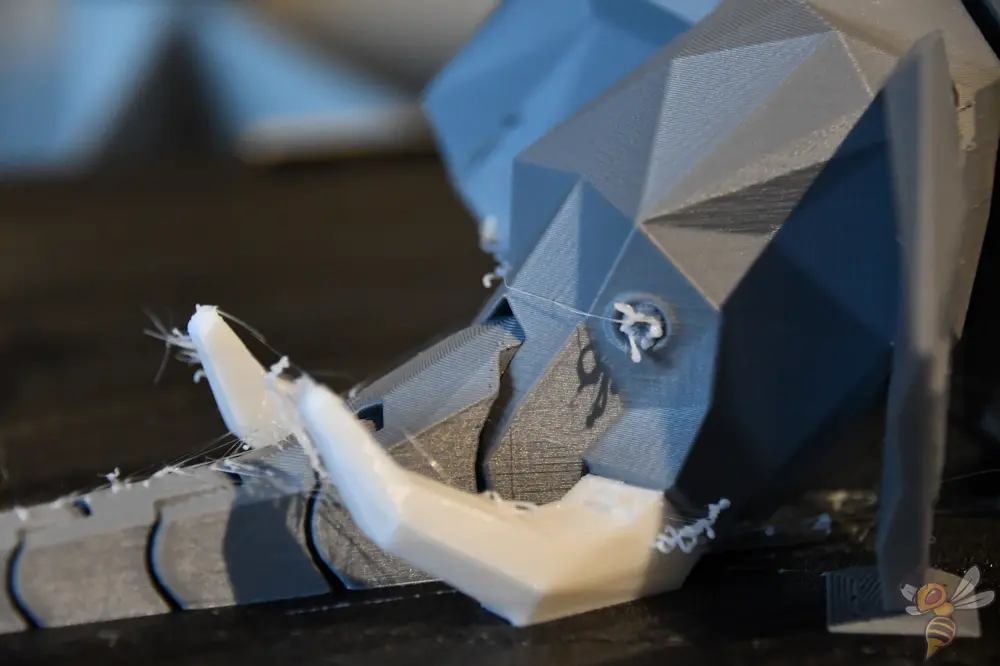- Wet Filament: Prevention, Symptoms & Drying - July 18, 2024
- Sovol SV08 – Best PrusaSlicer Settings & Profile - June 26, 2024
- Sovol SV08 – Best Orca Slicer Settings & Profile - June 26, 2024
Disclosure: Links marked with * are Affiliate Links. I earn from qualifying purchases if you decide to make a purchase through these links – at no additional cost for you!
Improper filament storage can lead to moisture absorption, degradation, more printing errors and ultimately, failed prints. Understanding and implementing effective storage solutions is key to maintaining the condition of your filaments and ensuring high-quality prints.
This guide will walk you through everything you need to know about storing your 3D printing filament correctly.
Table of Contents:
Filament Storage Needs
Key Factors Affecting Filament:
- Humidity: It’s the main problem. 3D printing filament absorbs moisture from the surrounding air. The soaked up moisture leads to stringing and an overall poorer print quality.
- Light Exposure: UV light (sunlight) can weaken the filament over time, reducing its strength and making it brittle.
Types of Filaments and Their Specific Needs:
- How to store PLA and ABS filaments: If you use it up in a 1–3 weeks, you only have to protect it from direct sunlight. After that, dry storage is a must. If you live in a climate with a high relative humidity, store the filament dry right from the start.
- How to store PETG, Nylon and TPU filament: These filaments absorb moisture from the surrounding air quickly. Dry storage is critical with these filaments. All three of these filaments are notorious for stringing and dry storage helps considerably.
- Specialty Filaments: All other filaments should also be stored dry and protected from direct sunlight from the get-go.
Filament Storage Solutions


Storing your 3D printing filament correctly is essential to avoid moisture damage and ensure your prints come out perfectly every time. Here’s how to do it:
- Use the original packaging as long as possible: All filaments come in airtight vacuum-sealed bags with silica gel packs. Open the bag only when you need the filament, not right after you bought it.
- Use an airtight container* with desiccant packs*: Place your filament in large, airtight containers. Add silica gel packs to absorb any moisture. This method is simple, affordable and very effective. Vacuum sealed bags* are an equivalent solution as well.
- Use a filament dryer for active protection during printing: Filament dryers actively remove moisture from the air around the filament. They are perfect for sensitive filaments because you can feed the filament right into the printer from the dryer. That way, you can print even large objects with moisture sensitive filaments like Nylon or PETG without getting quality issues after some time.
- Use a filament dryer to dry wet filament: If you did not store your filament correctly, you can dry it with a filament dryer. Read this guide for more information about drying moist filament.
Sources for this article:
- My years of experience in dealing with 3D printing filament and many practical tests of the effects of absorbed moisture on print quality.
- A Study of an Effect on Moisture from 3D Printer Filament Drying Processes (Limpadapun & Sukmanee, 2021)
Disclosure: This website is the property of Martin Lütkemeyer and is operated by Martin Lütkemeyer. Martin Lütkemeyer is a member of the Amazon Services LLC and other Affiliate Programs. These are affiliate advertising programs designed to enable websites to earn advertising revenue through advertising and linking to Amazon.com and others. Links marked with * are affiliate links.


